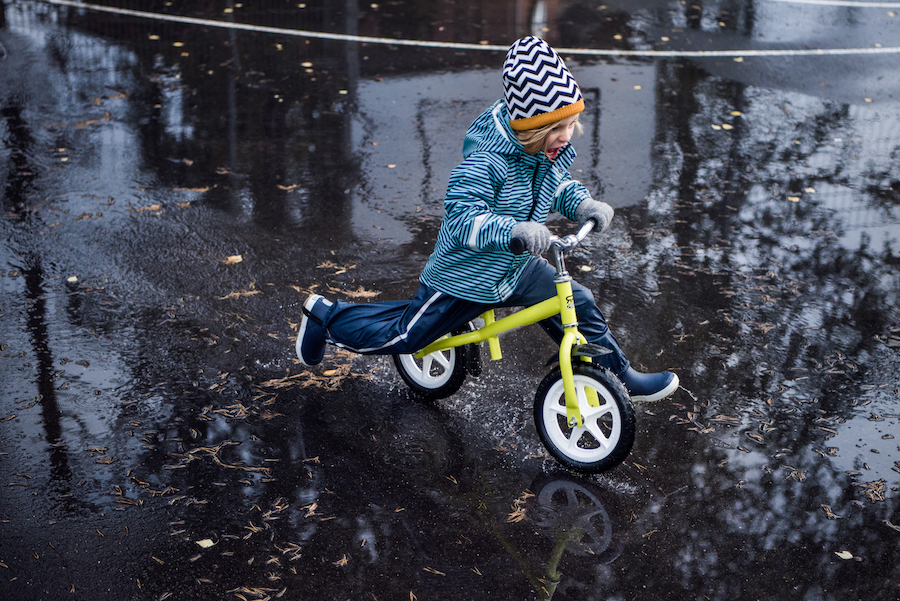By Eric Smith
Reima, a Finland-based maker of functional kidswear, debuted in the U.S. about a year ago, and the stateside expansion has been a successful one thanks to landing some premium retailers and successfully building brand awareness, according to Matti Lehtovirta, the company’s international sales director.
The privately held company doesn’t disclose revenue, but Lehtovirta said Reima’s U.S. business has grown 4 times in the past year, a testament to the company’s emphasis on finding strategic retail partners and targeting active children’s apparel in the right markets.
Founded in 1944, Reima designs apparel that is “made for kids on the move.” The company’s products are now found more than 35 countries, and Reima has 50-plus branded company stores, outlets and franchise shops worldwide.
In the U.S., the brand is in about 50 doors, including Nordstrom, Backcountry.com, REI and Paragon Sports. And the plan is to grow that number to “several hundred” in the coming years, according to Lehtovirta, who shared some details of the company’s U.S. expansion this week with SGB via email.
(For a brief history on the brand, click here.)
Here is the rest of what Lehtovirta told SGB about Reima’s entrance into the U.S. and how the company hopes to leverage a successful first year into more sales growth and additional market share:
What is the brand’s “story,” and has the company needed to change at all for the U.S. market? The Reima brand is built on superior functionality and performance, capitalizing on over 70 years of Nordic heritage. Founded in 1944 in Finland, Reima leads the functional kidswear market and believes in the joy of movement. During the school year in Finland, children spend three to four hours outside, regardless of weather, temperature or conditions. While that is not a requirement in the U.S. market, we believe that Reima can remove a major hurdle to spending time outside by keeping kids warm, comfortable, dry and safe regardless of how they chose to spend time outdoors.
What have been the U.S. revenues to date, and what is the potential growth rate for this market? Usually we don’t comment on revenues, but what I can say is that we have grown substantially year-over-year. To provide an idea, we’ve grown over 4 times from last winter to this winter, which is evidence of the brand’s strength.
How many retail doors are you in; what is your target number, and what is/are your primary channels? How are you working to reach your goal? We only target premium retailers in the outdoor, specialty sports and premium department store segment in addition to e-commerce. Currently we are in approximately 50 doors and are aiming for several hundred over the next five years.
Any plans for a Reima-branded store in the U.S? Why or why not? There are no plans for the immediate future. We need to learn more about the consumer preferences of the U.S. market and how they interact with the Reima brand before we can discuss a Reima-branded store. It’s not a central part of our U.S. strategy at this point, but a pilot may be part of the three-to-five-year plan.
What is the marketing strategy for the U.S., and how do you expect to measure its impact? At this time we are concentrating on creating brand awareness through marketing strategies such as public relations, social media and digital influencers. This year will be about creating a baseline of brand awareness and then looking at future years to build upon this as our distribution grows nationally.
What does Reima’s supply chain look like—manufacturing locations, vertical integrations, etc.? Clothes are manufactured in Asia (primarily China). Since 2010, Reima has been a member of Amfori, the leading global business association for open and sustainable trade. Reima participates in Amfori BSCI. We only use the best possible factories that comply with the strictest sustainability and safety norms, especially as we are also dealing with the infant category which is very demanding. We are vertically integrated, but we do not own our factories. We know who sews our clothes and where our fabrics come from. Manufacturing of garments is in China and Vietnam while shoes are manufactured in Italy and China.
What does the sales force look like in the U.S. (number of reps, geographic location of reps, etc.)? Currently we have half a dozen reps in territories such as the Rockies, New England, Mid-Atlantic, California, etc.
Instead of designing apparel in a “small size for tiny adults,” Reima says it designs functional clothing for active kids—how are you gauging demand for these products, and where does Reima differentiate with its active wear? The value of Reima products proves itself in everyday life; their lifecycle lasts from one child to another, and they are easy-care and durable, saving energy, water and detergent. Also, everything Reima designs is non-toxic and safe for children, from materials to attention to functional details. With over 70 years of cumulated experience and expertise, Reima focuses solely on children’s needs. Currently there are activewear companies that don’t understand kids. Likewise, there are kidswear companies that don’t understand active. This is the space that Reima owns, as we do both. In short, Reima differentiates in design (amazing prints, designed for specific age of child), durability (product lasts meaningfully longer than peers), being non-toxic and weatherproof (i.e., waterproof with sealed seams).
Photos courtesy Reima
[author] [author_image timthumb=’on’]https://s.gravatar.com/avatar/dec6c8d990a5a173d9ae43e334e44145?s=80[/author_image] [author_info]Eric Smith is Senior Business Editor at SGB Media. Reach him at eric@sgbonline.com or 303-578-7008. Follow on Twitter or connect on LinkedIn.[/author_info] [/author]

















